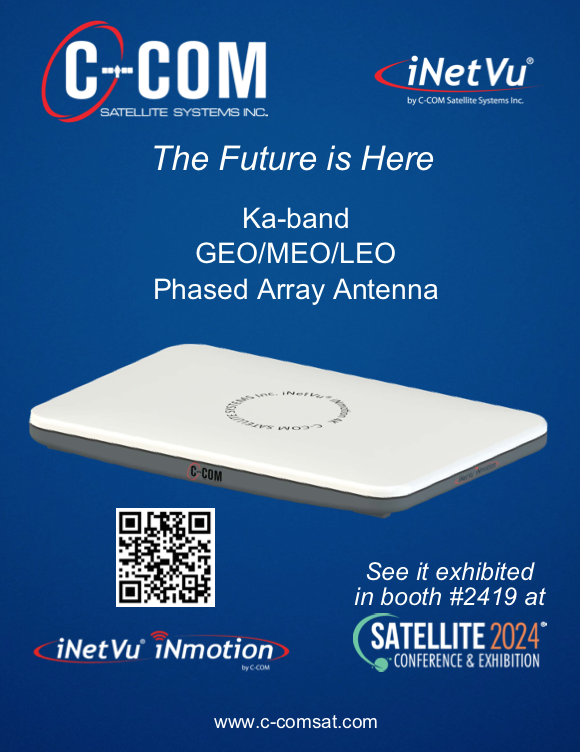The 4th of October, 2023, marked the 66th anniversary of the launch of Sputnik, the first, artificial, Earth satellite.
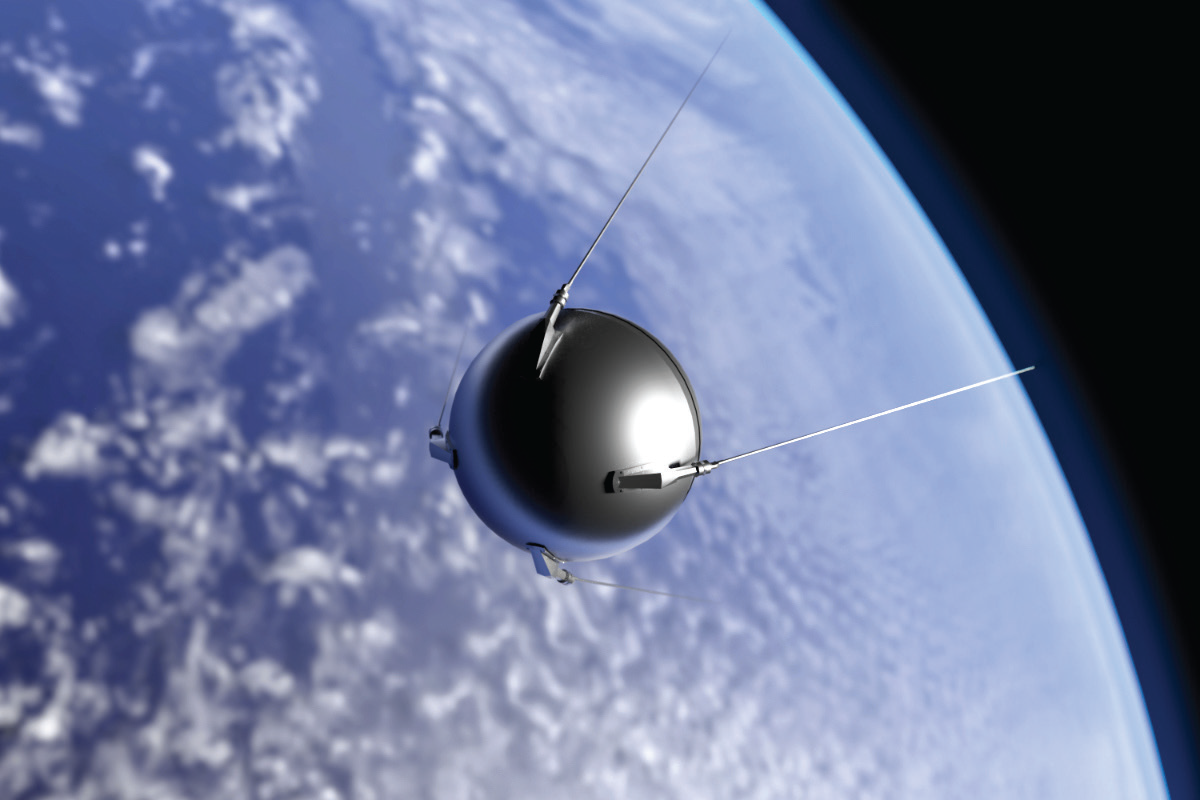
The 84 kg spacecraft, launched by the USSR, settled into an elliptical orbit, which took the satellite as close to Earth’s surface as 228 km and as far away as 947 km. The satellite zipped around Earth every 96 minutes and eventually re-entered the atmosphere a few months later.
Sputnik’s architecture was, at most, rudimentary: the satellite’s batteries weighed 51 kg, it was equipped with a 1-watt transmitter which encoded telemetry in low-frequency pulses, and it was pressurized with nitrogen.
It’s safe to assume that Sputnik’s architecture was exclusively crafted for this history-making project. Sputnik was a massive technological achievement and paved the way for an industry that has forever changed the way we communicate with one another and the manner in which we observe our planet, ourselves,and our Universe.
Since Sputnik’s orbit into history, nearly 10,000 satellites have been launched. At the start of 2024, the satellite tracking website Orbiting Now lists 8,377 active satellites in various Earth orbits.
Most of them do not look like Sputnik; they are certainly far more sophisticated. They do not, in most cases, unsystematically broadcast radio energy anymore and they communicate using point-to-point, encrypted links from space to ground.
At the same time, the sad truth is that satellites remain loners in space. They are largely unaware of the existence of other satellites, let alone being capable of sharing data between one another. Space systems are not interoperable and are rather uncomfortably disconnected. Think about how the Internet changed our lives by connecting computers together. That hasn’t happened yet in space.
While Sputnik-1 itself as a milestone should be celebrated, that satellite can serve as a compass of what needs to change — what are we still missing?
How do we improve the use of satellites and build them so they can meet the demands of today?
Some satellites generate high amount of data—a single acquisition from a camera or a radar can account for several gigabytes of raw data, creating terabytes of payload data per day. The real challenge is how to make sure this amount of data gets into the correct hands as quickly as possible.
Onboard storage is not infinite, and more importantly, customers are having problems that are waiting to be solved with the help of geospatial data.
On the other hand, we have critical, secure communications that is of paramount importance to the global society. Today, global communications mostly rely on terrestrial network solutions that tend to be more and more integrated. A failure of one element has the potential to create a major service disruption to the entire network. This, in turn, could impact essential governmental or institutional services or operations that are deemed crucial.
Bringing space-based satellites into the picture can significantly help to avoid concerns of security and efficiency.
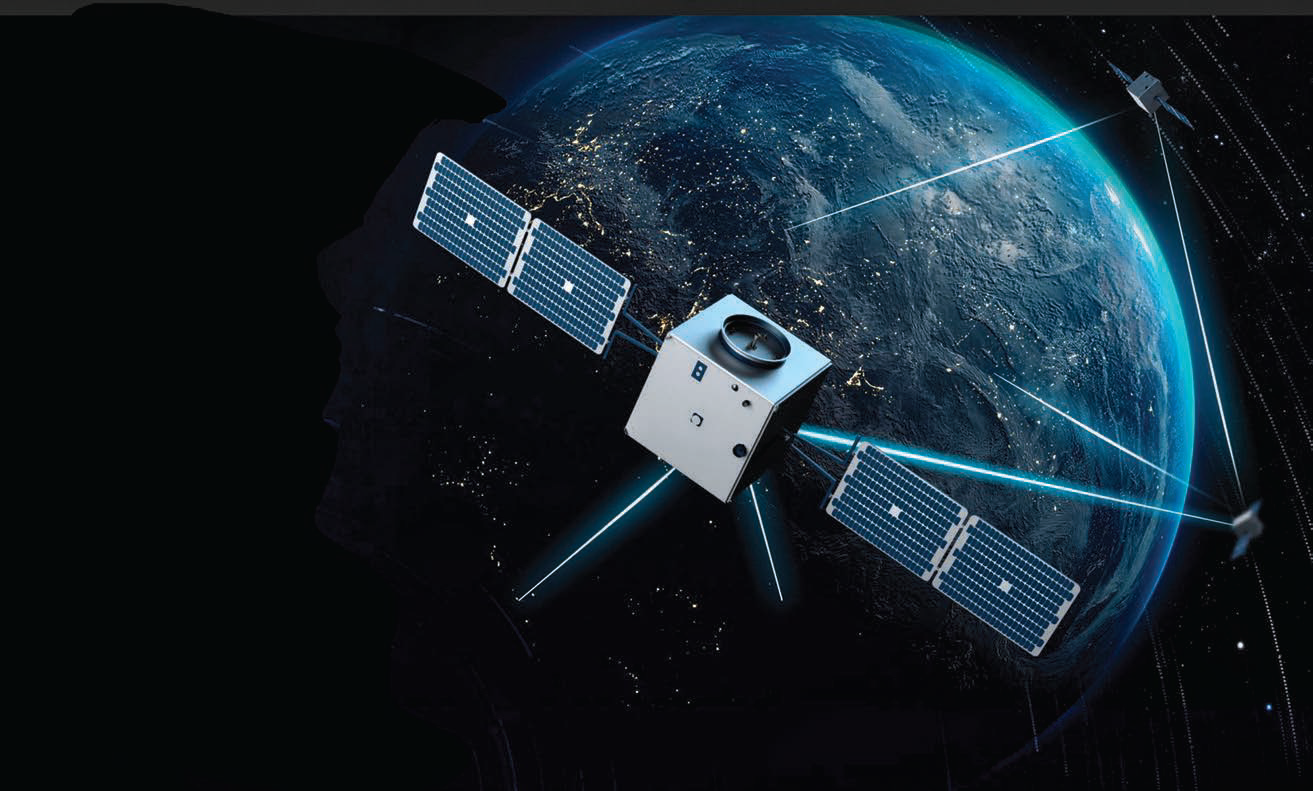
Space Internet of Things
The Internet of Things (IoT) has dominated the world by creating smart systems and applications. It is predicted that the number of connected gadgets in IoT will increase from 17 billion in 2024 to almost 30 billion by 2030 (sources: Transforma Insights; Exploding Topics). It is, therefore, essential to address the key challenges, such as scalability, ubiquitous global coverage, and real-time connectivity, that arise due to this immense growth of IoT devices. However, exclusively relying on the existing terrestrial networks to achieve scalability and global coverage is not a cost-viable solution.
A hybrid solution that would encompass space, on the other hand, can act as a suitable platform to solve the majority of existing and upcoming problems in the IoT domain. Adding appropriately customized, secure satellite communications components to telecommunication infrastructures can bridge the gap, help to connect the unconnected and ensure the secure components operate without interuption to channel the most sensitive and critical communications services to the end user.
Employing space technologies for IoT applications will create Space Internet of Things (Space-IoT), a concept that involves a satellite, or a network of them, to address the main challenges in terrestrial IoT deployments — global coverage, scalability, and real-time connectivity. End users will still rely heavily on the ground segment as the conduit for receiving their data, and the space domain will provide new data routes as well as complete existing solutions that are less efficient.
Space networks will also be used to connect all orbiting space objects to the internet, revolutionizing access to space assets. With routing, server and edge computing1 functionalities on the platforms in space, a new era of next-level smart and powerful networks could be unveiled.
Why is moving data in space of utmost importance?
IoT sensors and edge processing on satellites can enable further breakthroughs in civil applications. With the internet expanded into space, end users are able to transport their data through new paths, complementing or completing existing data routes. High performance edge computing will help commercial solutions with the autonomous processing of advanced analytics and algorithms at the edge, resulting in more timely delivery of information.
Initial use cases might include emergency services, satellite backhaul, connecting remote locations, military operations, maritime and aviation connectivity. Looking further, the increasing availability of faster data sources via 5G/6G, such as Earth Observation (EO) and mobility data, will unlock the potential to analyze and understand issues that were previously considered too complex, thereby building new use cases and demonstrating the value of geospatial data.
EO applications and technologies are used in a wide range of applications. Sixteen downstream market segments have been identified by EUSPA, in which applications powered or enabled by Earth Observation play an influential role. The sectors range from Agriculture to Urban Development and Cultural Heritage to Climate Services, Energy and Raw Materials, and address end users across public and private sectors, including individual citizens.
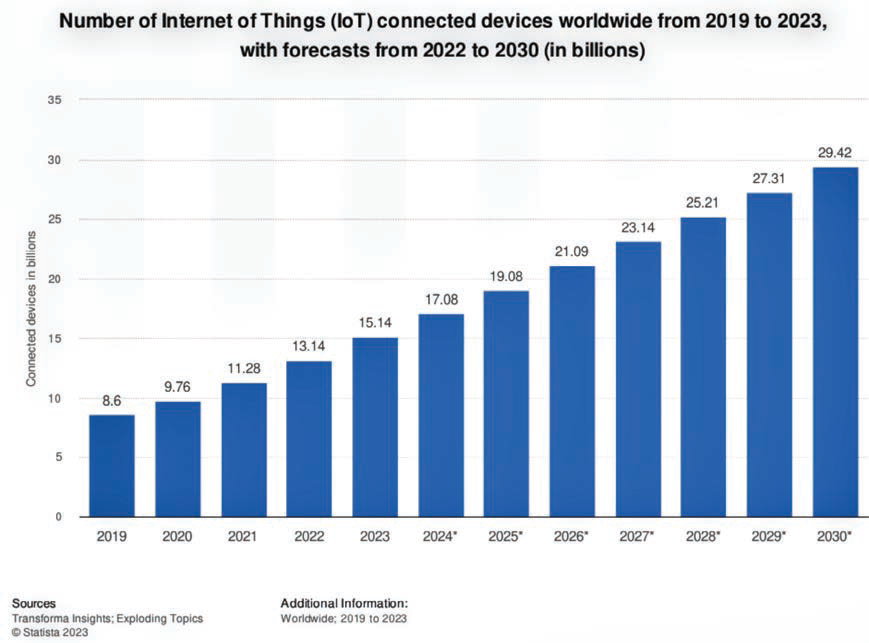
With EO sensors in Space-IoT, EO downstream markets will be redefined where direct access to data has a profound impact. Real-time access to sensors and equipment by connecting space assets to the internet will change the way users demand and apply data for various purposes, such as enhancing crop growth, battling climate change, responding to emergencies etc.
Software-first satellites at the forefront
As the satellite industry evolves toward an increasingly interconnected, data-driven environment, software plays a key role in ensuring full satellite flexibility, and enabling more integrated, higher-performance and more resilient software-defined
networks. Space is no different from other major industries, all of which are being transformed by digitalisation and the consequent predominance of software. The automotive and aeronautics sectors offer striking parallels to current developments in the space industry.
For example, “software-defined vehicles” have become a new standard in the automotive industry, as the value of software in a vehicle exceeds that of hardware. Moreover, this reflects the gradual transformation of cars from essentially mechanical and electronic platforms to intelligent and upgradeable ones.
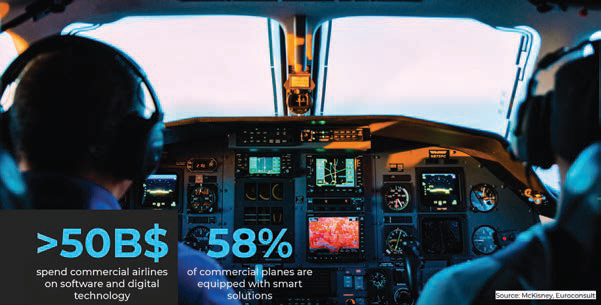
Cars become pre-integrated with advanced hardware that will be progressively enhanced via Over-The-Air systems throughout the lifecycle of the vehicle. According to the reports by Deloitte, BCG, and Ericsson, more than 50% of a car’s value is now related to the embedded software, and more than 90% of the innovations in the automotive industry are related to the vehicle’s software.
While satellites have been in constant operation for years, the advent of constellations, which require real-time management, together with interconnected satellites and terrestrial networks, are revolutionising the way satellite systems are operated. Previously, human-intensive applications, such as surveillance and maneuver decision-making, will be performed autonomously by artificial intelligence (AI) as a key supporting technology to mission planning and management, increasing the reliability, precision and speed of such operations is paramount to reduce dependence upon human interaction.
Advances in AI and onboard processing are key to reducing TT&C operations, which is of primary importance in a constellation architecture. Onboard processing enables almost fully automated management of constellations, whilst enabling greater efficiency, improved lead times and reduceing costs. With advances in AI, satellites will be able to independently run their daily operation and process their own health checks as well as help to predict future trends, as well as engage in self-diagnosis of failures and to then act accordingly to avoid repeating those errors.

The modularization of space systems, through a full software approach and the use of generic components for these modules, means greater interchangeability and, therefore, opportunity for higher volume production. This is especially true for the payload modules, which stand as the most expensive element of the system.
Download the full report at this direct link...
1Edge computing is a distributed computing framework that brings enterprise applications closer to data sources such as IoT devices or local edge servers (source: IBM)

Jana Avdeeva
Author Jana Avdeeva is the Head of Marketing at ReOrbit. She has an extensive background in building and implementing marketing strategies, purposed to elevate digital technologies within various sectors, including maritime and space. Based in Helsinki, Finland, Jana joined ReOrbit a year ago to build brand awareness and 360-degree marketing campaigns for this leading provider of software-first satellites that enable real-time data flows in space.
ReOrbit offers ready-to-go space systems and avionics for flexible and timely missions at any orbit, paving the way for a more secure, efficient and connected global society on Earth. Flight software enables ReOrbit’s satellites to become highly autonomous, reconfigurable, and serviceable, thereby providing the customers with solutions that are optimized for efficiency, connectivity and security. As software provides the operational foundation for satellites, hardware modularity is provided and separates the software and hardware, making the solutions independent of the subsystems. ReOrbit offers highly competitive solutions, with reliability, flexibility, fast time-to-orbit at market-leading prices.


